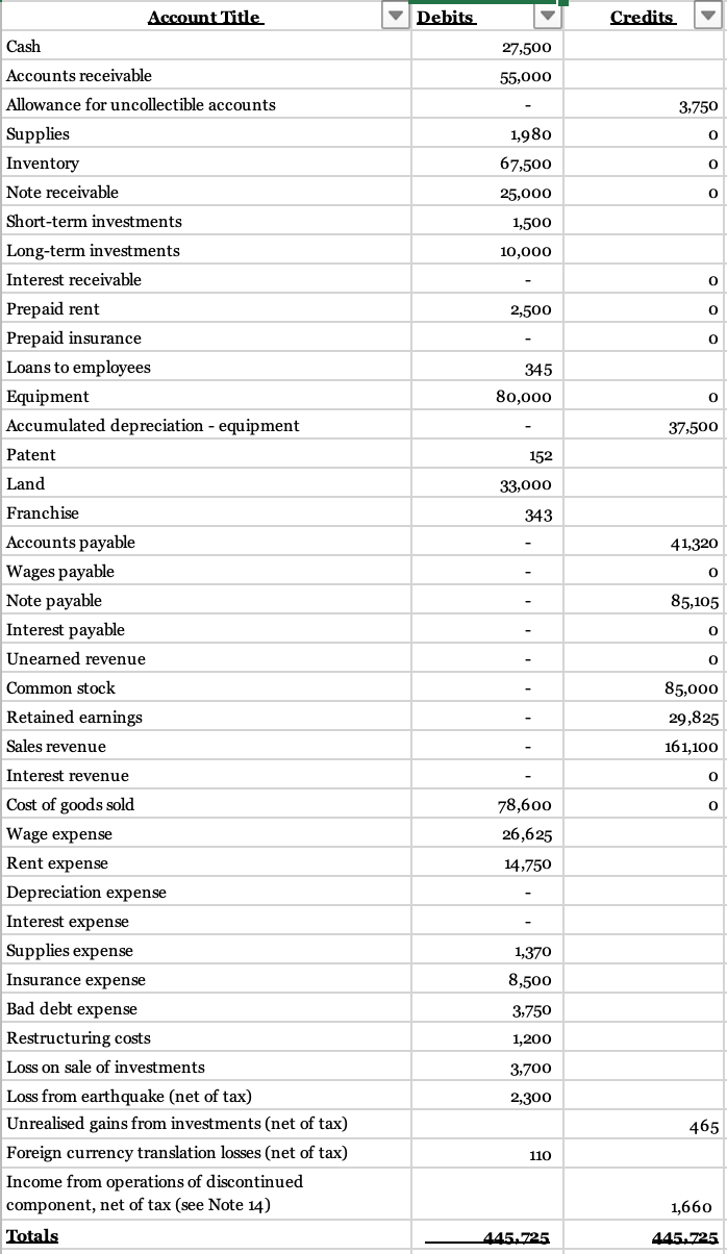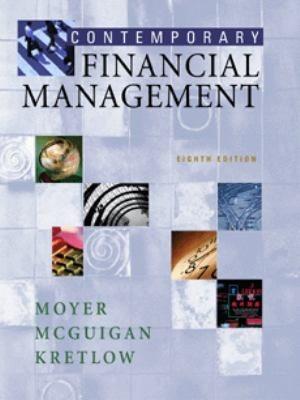Answered step by step
Verified Expert Solution
Question
1 Approved Answer
Pastina Company manufactures and sells various types of pasta to grocery chains as private label brands. The companys fiscal year-end is December 31. The unadjusted
Pastina Company manufactures and sells various types of pasta to grocery chains as private label brands. The companys fiscal year-end is December 31. The unadjusted trial balance as of December 31, 2011, appears below:

- The equipment is being depreciated using the straight-line method over an eight-year useful life with $10,000 salvage value.
- The company estimates that 4% of all year-end accounts receivable probably will not be collected.
- Employee wages are paid twice a month, on the 22nd wages earned for the 1st through the 15th , and on the 7th of the following month for wages earned from the 16th through the end of month. Wages earned from December 16 through December 31, 2011, were $1,565.
- On October 1, 2011, Pastina borrowed $50,800 from a local bank and signed a note. The note requires interest to be paid annually on September 30 at 10%. The principal is due in 10 years.
- On April 1, 2011, the company lent a supplier $28,000 and a note was signed requiring principal and interest at 7% to be paid on February 28, 2012
- On March 1, 2011, the company paid an insurance company $7,500 for a two-year fire insurance policy. The entire $7,500 was debited to insurance expense.
- $1,050 of supplies remained on hand at December 31, 2011.
- A customer paid Pastina $2,500 in December for 1,500 pounds of spaghetti to be manufactured and delivered in January 2012. Pastina credited sales revenue.
- On December 1, 2011. $2,500 rent was paid to the owner of the building. The payment represented rent for December and January 2012, at $1,250 per month.
- On July 1, 2011, the company purchased $12,000 of IBM Corporation bonds at face value. The bonds pay interest twice a year on January 1 and July 1. The annual rate is 12%.
- The companys income tax expense for the year was $10,650.
- Investments were sold during the year at a loss of $4,500. Company also had unrealized gains of $470 for the year on investments accounted for securities available for sale.
- Earthquake happened was considered as unusual and infrequent.
- During the year, company completed the sale of one of its operating divisions that qualifies as a component of the entity according to IFRS. The division had incurred an operating income of $560 in 2011 prior to the sale, and its assets were sold at a gain of $1,200.
- Loans to employees are due on September 30, 2012.
- Short-term investments consist of marketable equity securities that the company plans to sell in 2012 and $550 in treasury bills purchased on December 21 of the current year that mature on March 15, 2012. Long-term investments consist of bonds mentioned in Note 10.
- Notes payable consists of two notes, one for $40,000 due on February 1, 2012, and the remaining balance relates to the loan from a bank mentioned in Note 4.
- One million shares of common stock were outstanding at the beginning of the year. Additional 200,000 shares were issued on March 31. Also 70,000 were issued on December 1. Fifty thousand of preferred shares were outstanding throughout the year and $355 preferred stock dividends were declared during the year.
Instructions:
- Prepare an adjusted Trial balance. .
- Prepare companys Statement of retained earnings.
- Prepare a classified Balance sheet for the company at December 31, 2011.
Step by Step Solution
There are 3 Steps involved in it
Step: 1

Get Instant Access to Expert-Tailored Solutions
See step-by-step solutions with expert insights and AI powered tools for academic success
Step: 2

Step: 3

Ace Your Homework with AI
Get the answers you need in no time with our AI-driven, step-by-step assistance
Get Started


